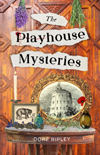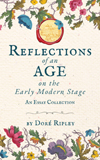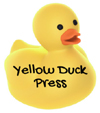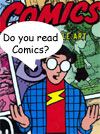
• H O M E •
C O M I C S • W R I T E R
'S N I B S • L I N K
S • B
L O G
• C O N T A C T
•

GRAMMAR/RHETORIC
For
the College Classroom
• S
C R I B B L I N G S •

PRIMITIVE ARCHER MAGAZINE
Hunting
Through
Medieval Literature
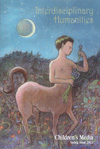
INTERDISCIPLINARY
HUMANITIES
Classroom
Comics: Children's
Medium and the New Literacy

GODDESSES
IN WORLD CULTURE
The
Maiden with a Thousand
Slippers

INTERDISCIPLINARY
HUMANITIES
Peter
Pan

HORSE
& RIDER MAGAZINE
A Whisper and a Prayer

COURSE CURRICULUM
ARTICLE
Christine de Pizan

CONFERENCE
PAPER
Hostages
in the Rose Garden
 After
leaving the corporate world, Doré Ripley earned a Master's
Degree in English and began teaching and writing. She wrote for a wide
audience in popular magazines, scholarly journals, and textbooks. Conference
papers took her all over the country to speak on myriad subjects ranging
from fairy tales, comics and science fiction to Renaissance and Medieval
literature, and all things noir.
After
leaving the corporate world, Doré Ripley earned a Master's
Degree in English and began teaching and writing. She wrote for a wide
audience in popular magazines, scholarly journals, and textbooks. Conference
papers took her all over the country to speak on myriad subjects ranging
from fairy tales, comics and science fiction to Renaissance and Medieval
literature, and all things noir.
As a professor at California State University, East Bay Ripley taught critical reading and writing to a culturally diverse mix of college students. She also taught many literature courses, including Comics as American Literature, Short Film, Science Fiction and Fantasy Literature, American Master Works, Children's Literature, Shakespeare and more.
She's started a new venture in the publishing world that feeds her need to write and to create beautiful designs.
Doré Ripley on Amazon, Barnes & Noble, and Google Play
Keepers of the Oracle: A Modern Fantasy of the Ancient Gods. Athena finds herself isolated in a world where skepticism has replaced faith, and the once mighty ancient gods are fading into obscurity. Keepers of the Oracle unravels a compelling narrative of waning divine power amidst the onslaught of modernity, as mortals unwittingly draw the ancient gods into a sinister dance with ancient evil.
Reflections of An Age on the Early Modern Stage. Step into a world of comedy, passion, power, and crime with this exciting essay collection exploring early modern drama in Londonís playhouses. From bloody spectacles to tabloid-style crime pulps that captured the imaginations of the emerging middle class, this collection provides a snapshot of the diverse tastes and interests of early modern audiences.
The Playhouse Mysteries. A Historical Novel of the Elizabethan Stage. The Playhouse Mysteries blends together historical figures and events to present the spirited lives and times of the Elizabethan playhouses, their actors, audience, friends, and family. But Southwark is also a dark, often deadly place, filled with secrets and intrigue where friends and enemies shift as quickly as the Thames.
EVERWHEN Press and YELLOW DUCK Press
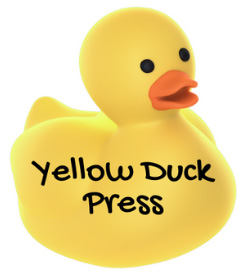 Yellow
Duck Press produces children's picture books, comic picture books,
and leveled readers that are whimsical, fun, and educational. The "Kitty
Cat Cousins" series offers children a charming set of books starring
their favorite felines who have dreams and problems experienced by young
readers. The "Holiday Keepers" series tells stories about how
our holidays started and are celebrated. Level 1 to 3 readers can "Sail
Into Reading" with readers for the aspiring book gobbler.
Yellow
Duck Press produces children's picture books, comic picture books,
and leveled readers that are whimsical, fun, and educational. The "Kitty
Cat Cousins" series offers children a charming set of books starring
their favorite felines who have dreams and problems experienced by young
readers. The "Holiday Keepers" series tells stories about how
our holidays started and are celebrated. Level 1 to 3 readers can "Sail
Into Reading" with readers for the aspiring book gobbler.
Yellow Duck Press also produces journals for kids encouraging thankfulness or inspiring kids to turn off their devices and turn on their imaginations.
As an award-winning author and educator with over 15 years of teaching experience, Ripley strives to create fun (and educational) books for kids.
See all kid's titles at: https://www.amazon.com/author/yellowduck.press
 Everwhen
Press is a boutique enterprise with a small offering of carefully
curated designs. Journals, graph paper notebooks, adult coloring books,
blank comic books, cursive practice workbooks, and logbooks for the book
lover.
Everwhen
Press is a boutique enterprise with a small offering of carefully
curated designs. Journals, graph paper notebooks, adult coloring books,
blank comic books, cursive practice workbooks, and logbooks for the book
lover.
Everwhen Press also produces 45-Day Sobriety and Living Clean reflective journals as well as the Just Today workbook.
A variety of Everwhen journals have covers feature beautiful public domain artwork. Too much of our historical artwork is ignored and just stuffed away in a museum, luckily some museums feel the same way. Many offer beautiful paintings and engravings to the public.
See more at: https://www.amazon.com/author/everwhen.press
BEAR MEADOW Press
 Bear
Meadow Press produces full-length texts and selected works for a discriminating
audience. All titles are featured on Amazon.com, Barnes & Noble, and
Google Play.
Bear
Meadow Press produces full-length texts and selected works for a discriminating
audience. All titles are featured on Amazon.com, Barnes & Noble, and
Google Play.
See our titles at: https://doreripley.wixsite.com/bear-meadow-press
Teaching Comics and Graphic Novels
When Ripley began teaching, she often taught intensive writing, or what was once called remediation, and those classes are filled with students who are uncomfortable with texts. They donít want to read them and they donít want to write them because they havenít been successful with the written word. So when students arrived for the first day of class with a graphic novel in hand, she knows they thought the class would be easy. And that was her goal.
If students and readers believe intensive reading and writing is going to be fairly painless, they will relax long enough to think critically about what is going on in the graphic novelís panels. Instead of parroting back written text, theyíll have to interpret the panels, and join the conversation taking placing on the pages of a graphic novel. What's more, students expand their college-level vocabulary by finding visual definitions for words. And surprisingly, visual vocabulary seems to "stick," showing up used properly in student essays.

